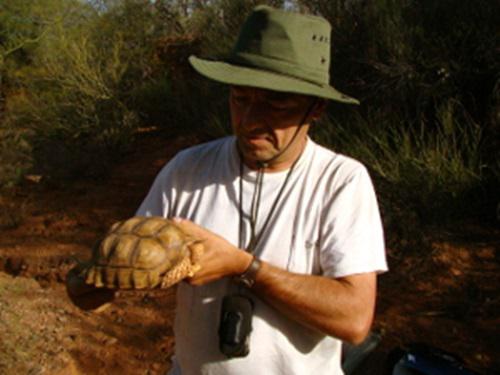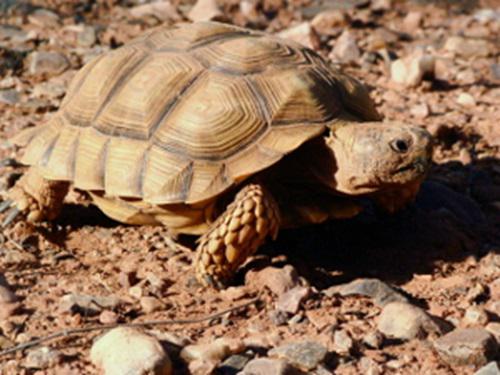Alejandro Ruete
We aim to generate essential baseline information about the species abundance, habitat requirements, and impact of human activities surrounding the protected area. This protected area is crucial as it is on the core of the species distribution in the Chaco region. We also aim to change in local people and visitors to the park the perception of the species as a pet.

The common Chaco tortoise, Chelonoidis chilensis, is a burrow-nesting species found mainly in the ecoregions of Monte and Gran Chaco. To meet the historic demand for tortoises on the pet market, the species is continuously being illegally extracted from nature, as shown by the continuous seizures carried out by local authorities. The species is also threatened because of the expansion of the agricultural frontier and by competition with goats and sheep. Although the species is categorized as Vulnerable by the IUCN and is described for 12 Argentinean protected areas, baseline data on population abundances and distribution is lacking. It is therefore critical for the species conservation to investigate the performance of protected areas (PAs) in their role of protecting the Chaco tortoise. We aim to better understand the species habitat selection, the relative importance of the different threats at a local scale, and to estimate the populations’ abundance within Sierra de las Quijadas National Park. We will survey one protected area on the core of the specie distribution, and will provide baseline information, decision tools, and viability analysis of the species.

In previous studies, we were able to understand the species climatic requirements at a regional scale and predict the species distribution over Argentina, Paraguay, and Bolivia. We now need systematic local observations of presences, absences and abundance of the tortoises at a local scale. Including variables at a regional scale (e.g. bioclimatic variables) together with local environmental variables that describe the availability of nesting sites, dispersal barriers, or influence of land use would be extremely advantageous to understand the species biology. We will obtain a high resolution map for the species probability of observation and the first quantitative evaluation of the species abundance on the studied National Park. This information will provide a powerful tool for authorities to make decisions and for detection of core areas for special protection needs. This information will help us to develop an education campaign both in local schools and with visitors to the national park, to change peoples perception of the species as a pet.